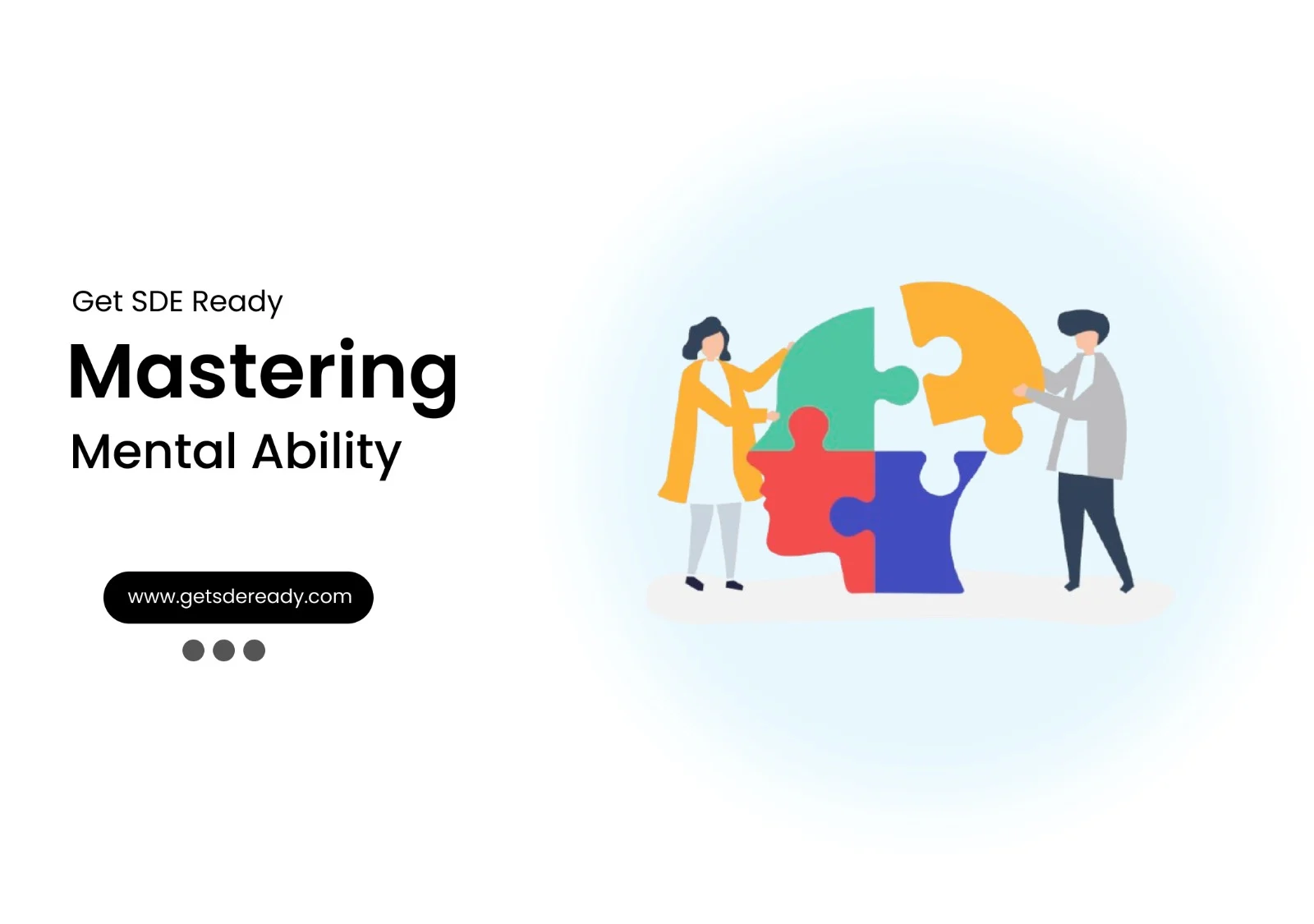Data Structures and Algorithms
- Introduction to Data Structures and Algorithms
- Time and Space Complexity Analysis
- Big-O, Big-Theta, and Big-Omega Notations
- Recursion and Backtracking
- Divide and Conquer Algorithm
- Dynamic Programming: Memoization vs. Tabulation
- Greedy Algorithms and Their Use Cases
- Understanding Arrays: Types and Operations
- Linear Search vs. Binary Search
- Sorting Algorithms: Bubble, Insertion, Selection, and Merge Sort
- QuickSort: Explanation and Implementation
- Heap Sort and Its Applications
- Counting Sort, Radix Sort, and Bucket Sort
- Hashing Techniques: Hash Tables and Collisions
- Open Addressing vs. Separate Chaining in Hashing
- DSA Questions for Beginners
- Advanced DSA Questions for Competitive Programming
- Top 10 DSA Questions to Crack Your Next Coding Test
- Top 50 DSA Questions Every Programmer Should Practice
- Top Atlassian DSA Interview Questions
- Top Amazon DSA Interview Questions
- Top Microsoft DSA Interview Questions
- Top Meta (Facebook) DSA Interview Questions
- Netflix DSA Interview Questions and Preparation Guide
- Top 20 DSA Interview Questions You Need to Know
- Top Uber DSA Interview Questions and Solutions
- Google DSA Interview Questions and How to Prepare
- Airbnb DSA Interview Questions and How to Solve Them
- Mobile App DSA Interview Questions and Solutions
DSA Interview Questions
- DSA Questions for Beginners
- Advanced DSA Questions for Competitive Programming
- Top 10 DSA Questions to Crack Your Next Coding Test
- Top 50 DSA Questions Every Programmer Should Practice
- Top Atlassian DSA Interview Questions
- Top Amazon DSA Interview Questions
- Top Microsoft DSA Interview Questions
- Top Meta (Facebook) DSA Interview Questions
- Netflix DSA Interview Questions and Preparation Guide
- Top 20 DSA Interview Questions You Need to Know
- Top Uber DSA Interview Questions and Solutions
- Google DSA Interview Questions and How to Prepare
- Airbnb DSA Interview Questions and How to Solve Them
- Mobile App DSA Interview Questions and Solutions
Data Structures and Algorithms
- Introduction to Data Structures and Algorithms
- Time and Space Complexity Analysis
- Big-O, Big-Theta, and Big-Omega Notations
- Recursion and Backtracking
- Divide and Conquer Algorithm
- Dynamic Programming: Memoization vs. Tabulation
- Greedy Algorithms and Their Use Cases
- Understanding Arrays: Types and Operations
- Linear Search vs. Binary Search
- Sorting Algorithms: Bubble, Insertion, Selection, and Merge Sort
- QuickSort: Explanation and Implementation
- Heap Sort and Its Applications
- Counting Sort, Radix Sort, and Bucket Sort
- Hashing Techniques: Hash Tables and Collisions
- Open Addressing vs. Separate Chaining in Hashing
- DSA Questions for Beginners
- Advanced DSA Questions for Competitive Programming
- Top 10 DSA Questions to Crack Your Next Coding Test
- Top 50 DSA Questions Every Programmer Should Practice
- Top Atlassian DSA Interview Questions
- Top Amazon DSA Interview Questions
- Top Microsoft DSA Interview Questions
- Top Meta (Facebook) DSA Interview Questions
- Netflix DSA Interview Questions and Preparation Guide
- Top 20 DSA Interview Questions You Need to Know
- Top Uber DSA Interview Questions and Solutions
- Google DSA Interview Questions and How to Prepare
- Airbnb DSA Interview Questions and How to Solve Them
- Mobile App DSA Interview Questions and Solutions
DSA Interview Questions
- DSA Questions for Beginners
- Advanced DSA Questions for Competitive Programming
- Top 10 DSA Questions to Crack Your Next Coding Test
- Top 50 DSA Questions Every Programmer Should Practice
- Top Atlassian DSA Interview Questions
- Top Amazon DSA Interview Questions
- Top Microsoft DSA Interview Questions
- Top Meta (Facebook) DSA Interview Questions
- Netflix DSA Interview Questions and Preparation Guide
- Top 20 DSA Interview Questions You Need to Know
- Top Uber DSA Interview Questions and Solutions
- Google DSA Interview Questions and How to Prepare
- Airbnb DSA Interview Questions and How to Solve Them
- Mobile App DSA Interview Questions and Solutions
Explain Content Delivery Networks (CDN) in Interviews
Introduction
In today’s fast-paced digital world, delivering web content quickly and reliably is critical for user satisfaction and business success. Content Delivery Networks (CDNs) are the backbone of this efficiency, ensuring that users worldwide access websites, videos, and applications with minimal delay. If you’re preparing for a technical interview, particularly in web development or system design, understanding CDNs is a must. This guide offers a detailed exploration of CDNs, from their core concepts to advanced topics, tailored to help you confidently tackle CDN-related questions in interviews.
Want to deepen your knowledge of system design and CDNs? Sign up for our free courses to get started on your learning journey and stay updated with the latest tech insights.
What is a Content Delivery Network (CDN)?
Definition and Purpose
A Content Delivery Network (CDN) is a system of geographically distributed servers that cache and deliver web content to users based on their location. The primary goal is to reduce latency—the delay between a user’s request and the content’s appearance—by serving content from servers closer to the user. CDNs are widely used to deliver static assets like images, CSS, JavaScript files, and videos, but modern CDNs also handle dynamic content, such as personalized web pages or API responses.
CDNs emerged in the late 1990s to address internet performance bottlenecks and have since become integral to the internet ecosystem, serving over 50% of web traffic, including content from major platforms like Netflix, Amazon, and Facebook (source: Cloudflare, 2023).
How CDNs Work
When a user visits a website, their request is routed to the nearest CDN edge server via the Domain Name System (DNS). If the requested content is cached on the edge server, it’s delivered immediately. If not, the edge server fetches the content from the origin server, caches it for future requests, and serves it to the user. This process minimizes the distance data travels, reducing latency and improving load times.
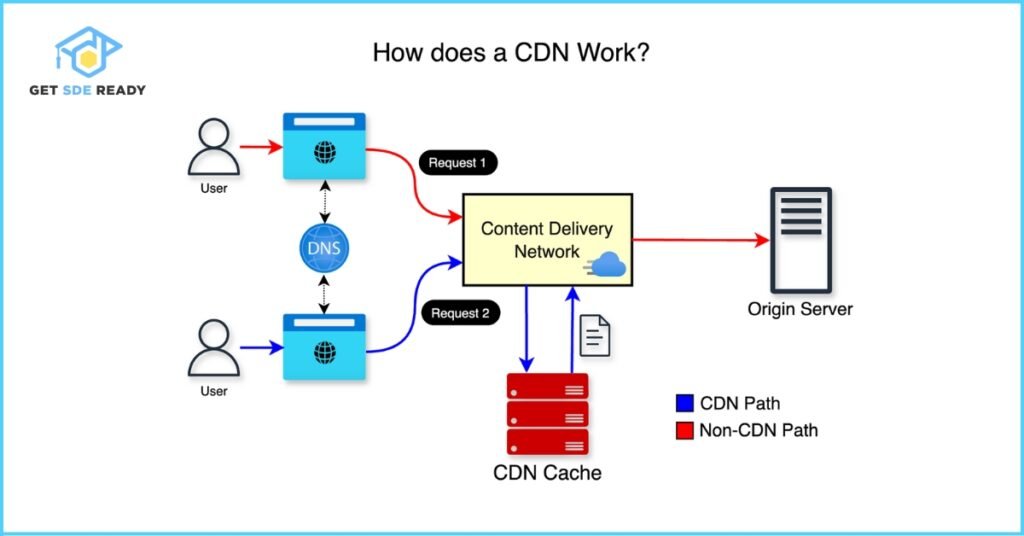
For example, a user in Tokyo accessing a U.S.-based website would receive content from a nearby edge server in Asia, rather than waiting for data to travel across the Pacific.
Benefits of Using a CDN
CDNs offer several advantages that make them indispensable for modern web applications:
- Improved Website Performance: By caching content closer to users, CDNs reduce page load times, which studies show can decrease bounce rates by 11% and boost conversions by 7% (source: Imperva, 2021).
- Enhanced Security: CDNs provide protection against Distributed Denial of Service (DDoS) attacks by distributing traffic across multiple servers and using techniques like traffic filtering.
- Scalability: CDNs handle traffic spikes, such as during product launches, by leveraging their distributed infrastructure, which can absorb up to 100+ Tbps of traffic (source: Akamai, 2023).
- Cost Savings: By offloading traffic from the origin server, CDNs reduce bandwidth costs, sometimes by up to 80% for heavily trafficked sites (source: Cloudflare, 2023).
- Global Availability: CDNs ensure content remains accessible even during server outages or network congestion through redundancy and failover mechanisms.
To dive deeper into building scalable systems, check out our System Design Course.
CDN Architecture
Key Components of CDN Architecture
A CDN’s architecture is designed to optimize content delivery through a combination of hardware and software components:
- Edge Servers: Located at Points of Presence (PoPs), these servers cache content and serve it to users. PoPs are strategically placed in data centers worldwide to minimize latency.
- Origin Server: The primary server hosting the original content, which edge servers query when content isn’t cached.
- DNS: Uses techniques like Anycast or GeoIP-based routing to direct user requests to the nearest edge server.
- Load Balancers: Distribute traffic across edge servers to prevent overloading and ensure optimal performance.
- Caching Mechanisms: Store content using strategies like Time-to-Live (TTL) and cache invalidation to balance freshness and performance.
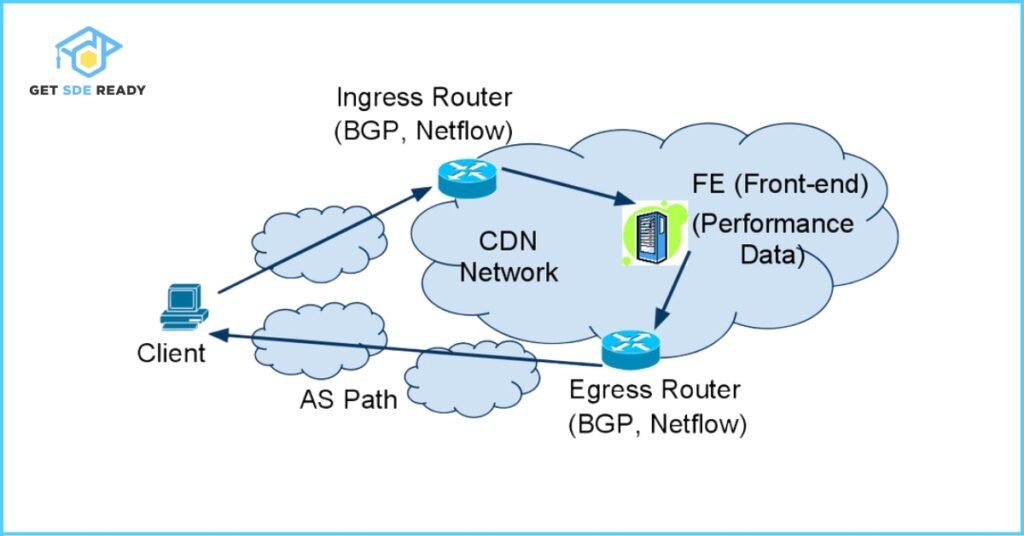
How Content is Delivered
The content delivery process follows these steps:
- User Request: A user accesses a website, triggering a request for content.
- DNS Resolution: The CDN’s DNS system identifies the nearest edge server based on the user’s location.
- Content Retrieval: The edge server checks its cache. If the content is available, it’s served immediately. If not, it fetches the content from the origin server, caches it, and delivers it.
- Content Delivery: The user receives the content with minimal latency.
This process is seamless to the user, ensuring a fast and reliable experience. For a deeper understanding of web infrastructure, explore our Web Development Course.
Types of CDNs
CDNs can be categorized based on their use cases:
- General-Purpose CDNs: Handle a wide range of content, including static assets (e.g., images, CSS) and dynamic content (e.g., API responses). Examples include Cloudflare and Akamai.
- Video CDNs: Optimized for streaming media, offering features like adaptive bitrate streaming for smooth video playback. Limelight Networks is a notable provider.
- Application CDNs: Focus on accelerating dynamic content and applications, often using edge computing. Fastly is a leader in this space.
Popular CDN Providers
Several providers dominate the CDN market, each with unique strengths:
- Cloudflare: Known for user-friendly interfaces and robust security features, including DDoS protection and Web Application Firewalls (WAF).
- Akamai: A pioneer with an extensive network, handling over 100 Tbps of traffic and offering advanced security services.
- Amazon CloudFront: Seamlessly integrates with AWS services, ideal for cloud-based applications.
- Fastly: Specializes in real-time content updates and edge computing for dynamic content.
- Google Cloud CDN: Leverages Google’s global infrastructure for high performance and analytics.
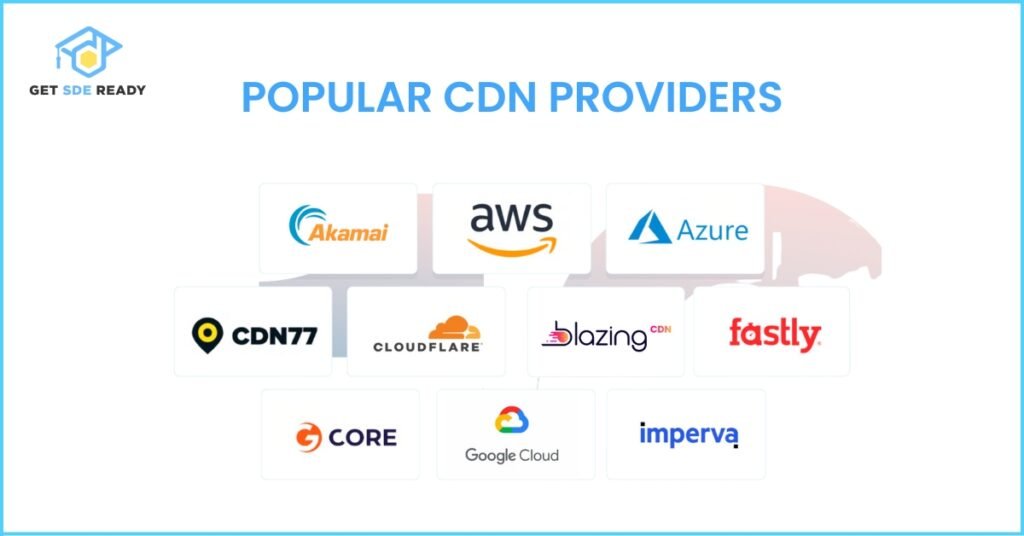
For those interested in cloud technologies, our Data Science Course covers related topics like cloud infrastructure optimization.
CDNs in Technical Interviews
Common Interview Questions
CDNs are a frequent topic in system design and web development interviews, especially at FAANG companies. Here are common questions and concise answers:
- What is a CDN and why is it used?
- A CDN is a network of distributed servers that caches content closer to users to reduce latency, improve performance, and enhance scalability.
- How does a CDN improve website performance?
- By serving content from edge servers near the user, CDNs minimize data travel distance, reducing load times.
- What are the key components of a CDN architecture?
- Edge servers, origin servers, DNS, load balancers, and caching mechanisms.
- How does caching work in a CDN?
- Content is cached on edge servers after the first request. Subsequent requests are served from the cache, reducing origin server load.
- What is the difference between a CDN and a regular web server?
- A web server hosts content in one location, while a CDN distributes cached content globally for faster delivery.
- How does a CDN handle high traffic and DDoS attacks?
- CDNs distribute traffic across multiple servers and use scrubber servers to filter malicious traffic, mitigating DDoS attacks.
To prepare for system design interviews, try our Crash Course for hands-on practice.
Advanced CDN Topics
For senior roles or advanced interviews, you may encounter questions on:
- CDN Routing Techniques:
- Anycast Routing: Directs traffic to the nearest server using a single IP address.
- DNS-based Routing: Uses DNS to select the optimal edge server based on location or load.
- GeoIP-based Routing: Maps user IP addresses to nearby servers.
- Caching Mechanisms:
- Time-to-Live (TTL): Determines how long content stays cached before refreshing.
- Cache Invalidation: Removes outdated content to ensure freshness.
- Cache Control Headers: Allow fine-tuned control over caching behavior.
- CDN Network Topologies:
- Flat Topology: All edge servers connect directly to the origin.
- Hierarchical Topology: Uses intermediate servers for caching and distribution.
- Mesh Topology: Servers communicate peer-to-peer for redundancy.
- Hybrid Topology: Combines elements of the above for flexibility.
- Dynamic Content Acceleration: Modern CDNs use edge computing and caching rules to accelerate dynamic content, such as personalized web pages or API responses.
For a comprehensive dive into data structures and algorithms that complement system design, check out our DSA Course.
Conclusion
Mastering CDNs is essential for excelling in technical interviews, particularly for roles in web development, system design, or cloud engineering. By understanding their architecture, benefits, and advanced concepts, you can confidently explain how CDNs optimize content delivery and handle real-world challenges like traffic spikes and security threats. Practice articulating these concepts clearly, as interviewers value both technical depth and communication skills.
Ready to take your interview prep to the next level? Explore our System Design and Web Development Course for expert-led training and mock interviews.
FAQs
What is the primary purpose of a CDN?
To enhance content delivery speed by caching content closer to users, reducing latency.
How does a CDN reduce latency?
By storing content on edge servers near the user, minimizing data travel distance.
Can CDNs handle dynamic content?
Yes, modern CDNs use caching rules and edge computing to accelerate dynamic content delivery.
What are some popular CDN providers?
Cloudflare, Akamai, Amazon CloudFront, and Fastly are among the leading providers.
How does a CDN protect against DDoS attacks?
By distributing traffic across multiple servers and using filtering techniques to block malicious requests.
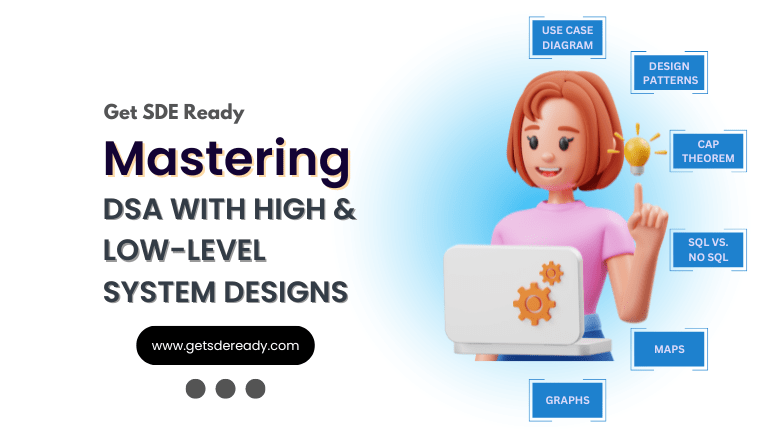
DSA, High & Low Level System Designs
- 85+ Live Classes & Recordings
- 24*7 Live Doubt Support
- 400+ DSA Practice Questions
- Comprehensive Notes
- HackerRank Tests & Quizzes
- Topic-wise Quizzes
- Case Studies
- Access to Global Peer Community
Buy for 52% OFF
₹25,000.00 ₹11,999.00
Accelerate your Path to a Product based Career
Boost your career or get hired at top product-based companies by joining our expertly crafted courses. Gain practical skills and real-world knowledge to help you succeed.
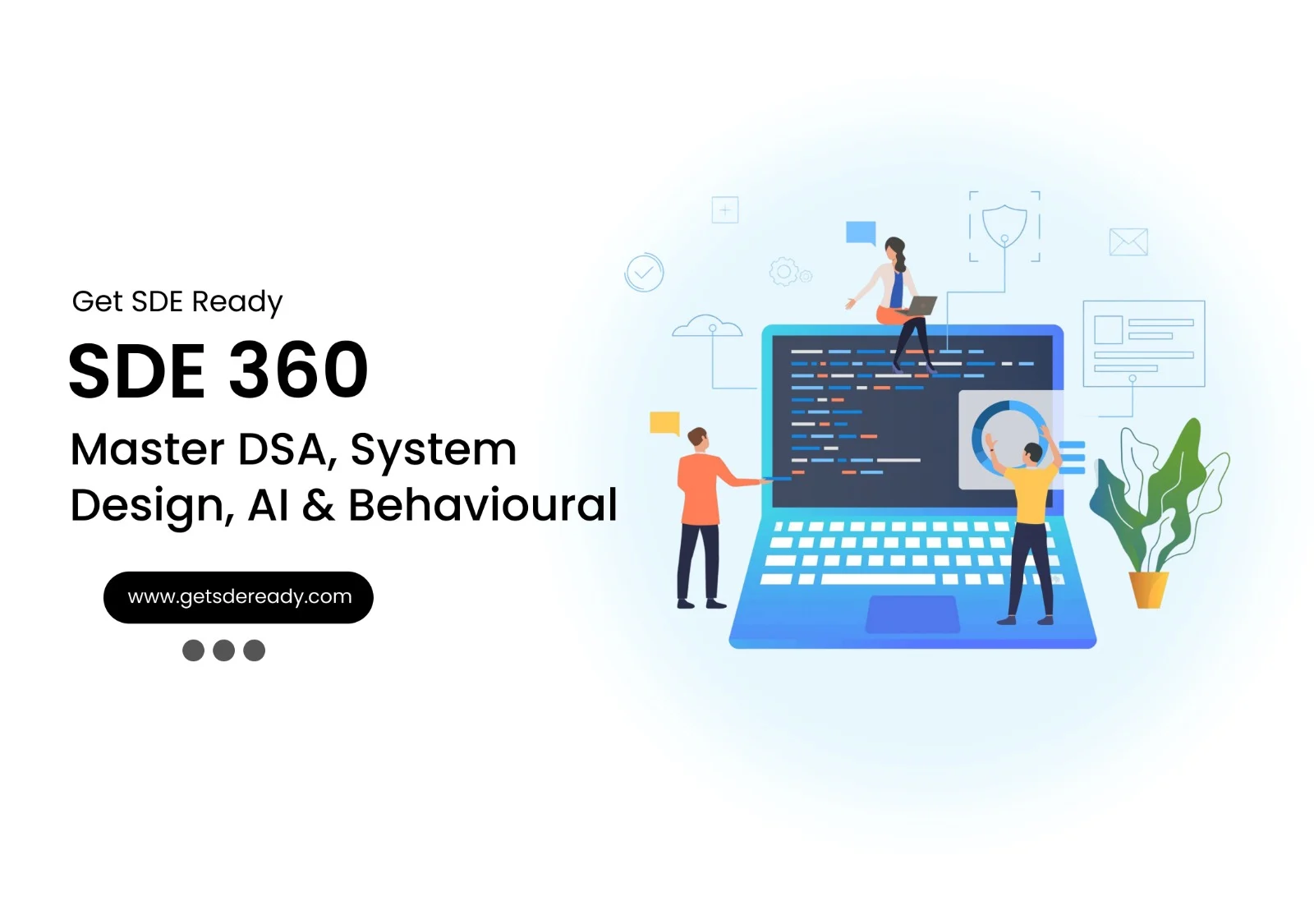
SDE 360: Master DSA, System Design, AI & Behavioural
- 100+ Live Classes & Recordings
- 24*7 Live Doubt Support
- 400+ DSA Practice Questions
- Comprehensive Notes
- HackerRank Tests & Quizzes
- Topic-wise Quizzes
- Case Studies
- Access to Global Peer Community
Buy for 50% OFF
₹39,999.00 ₹19,999.00

DSA, High & Low Level System Designs
- 85+ Live Classes & Recordings
- 24*7 Live Doubt Support
- 400+ DSA Practice Questions
- Comprehensive Notes
- HackerRank Tests & Quizzes
- Topic-wise Quizzes
- Case Studies
- Access to Global Peer Community
Buy for 52% OFF
₹25,000.00 ₹11,999.00
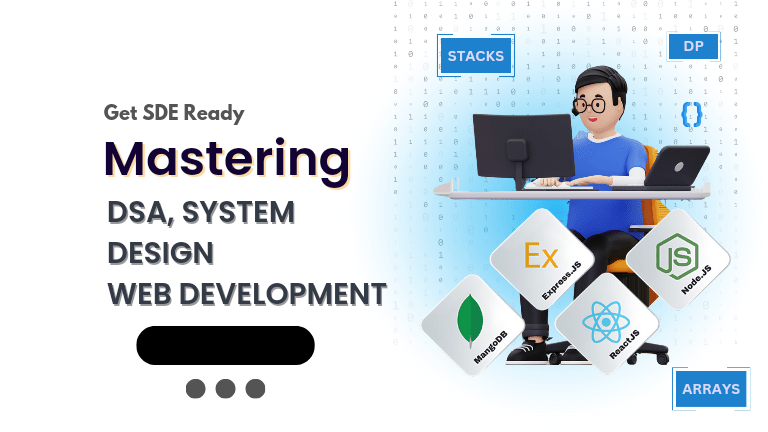
Fast-Track to Full Spectrum Software Engineering
- 120+ Live Classes & Recordings
- 24*7 Live Doubt Support
- 400+ DSA Practice Questions
- Comprehensive Notes
- HackerRank Tests & Quizzes
- 12+ live Projects & Deployments
- Case Studies
- Access to Global Peer Community
Buy for 51% OFF
₹35,000.00 ₹16,999.00

Low & High Level System Design
- 20+ Live Classes & Recordings
- 24*7 Live Doubt Support
- Case Studies
- Comprehensive Notes
- HackerRank Tests
- Topic-wise Quizzes
- Access to Global Peer Community
- Interview Prep Material
Buy for 60% OFF
₹20,000.00 ₹7,999.00
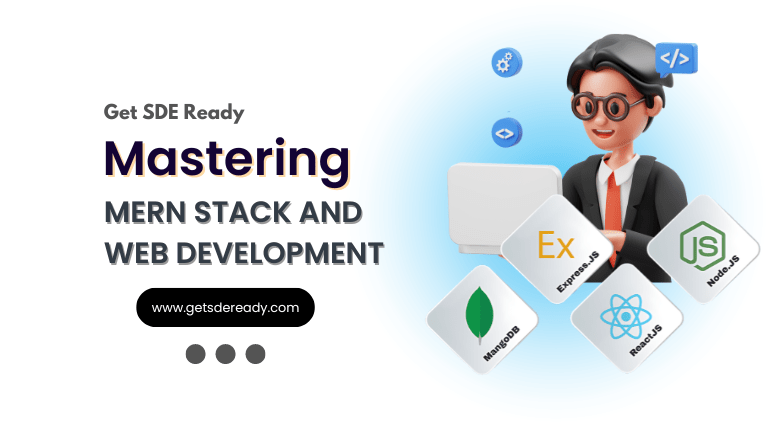
Mastering Mern Stack (WEB DEVELOPMENT)
- 65+ Live Classes & Recordings
- 24*7 Live Doubt Support
- 12+ Hands-on Live Projects & Deployments
- Comprehensive Notes & Quizzes
- Real-world Tools & Technologies
- Access to Global Peer Community
- Interview Prep Material
- Placement Assistance
Buy for 53% OFF
₹15,000.00 ₹6,999.00
Reach Out Now
If you have any queries, please fill out this form. We will surely reach out to you.
Contact Email
Reach us at the following email address.
arun@getsdeready.com
Phone Number
You can reach us by phone as well.
+91-97737 28034
Our Location
Rohini, Sector-3, Delhi-110085
